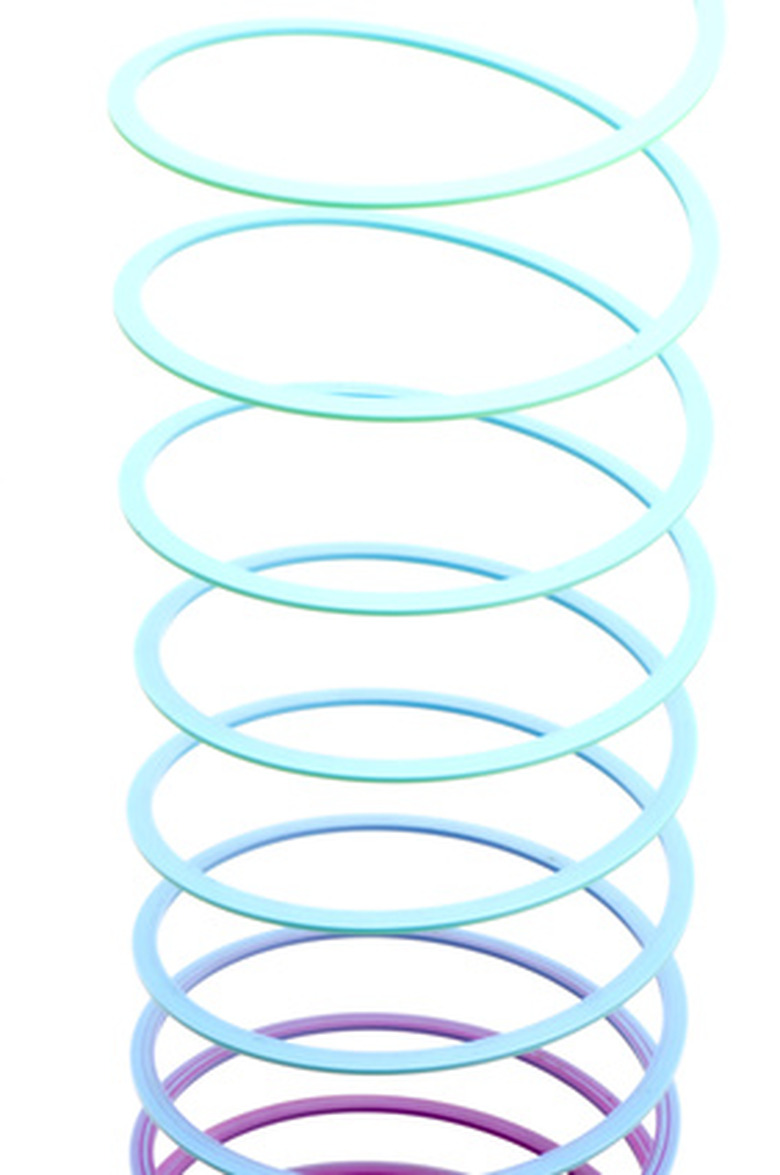How To Calculate The Inductance Of A Coil
Coils are inductors–they resist the flow of alternating current. This inductance is accomplished by magnetically shifting the relationship between the voltage (how much electromagnetic force is being applied) and the current (how many electrons are flowing). Usually voltage and current are in phase–both high at the same time, both low at the same time. Coils change that, and the stronger the coil (the more henrys, or units of inductance), the bigger the phase shift.
Step 1
Calculate the inductance of a coil as an educational exercise or if you expect someday to build a radio from spare parts. The coils you buy will have the henrys (measure of inductance) clearly marked. Knowing the formula will help you understand the behavior of coils, and there is no better way to understand and remember a formula than to use it.
Step 2
Take two measurements: the length of the coil and the diameter of the coil. The more accurately you make these measurements, the more accurate your results will be. In the calculation that follows, "L" will be the length of the coil and "D" will be the diameter of the coil. Now count the number of rings in the coil. This will be "N" in the formula. Now that you have values for L, D and N, you can do the calculation.
Step 3
Compute the inductance by squaring both N and D. Then multiply the squares and divide the result by (18D + 40L). This will give you the inductance in microhenrys. There are one million microhenrys in a henry. The formula is:
The micro henrys of inductance in a coil = (N^2)(D^2)/(18D + 40L) where "N" equals the number of rings in the coil, "D" equals the diameter of the coil and "L" equals the length of the coil.
Things Needed
- Ruler
- Calculator
TL;DR (Too Long; Didn't Read)
Unless you have a programmable calculator, it is advisable to do this calculation in steps. For example, compute 18D and write it down; compute 40L and write it down. Add 18D to 40L and write "denominator = (whatever it is)." Do the same for the numerator. Your last step will be to divide the numerator by the denominator to get the inductance.
There are online inductance calculators that can make this calculation a lot easier. You will still have to measure the coil.
Warning
Unless your wires are insulated, your calculation will be incorrect if any of the rings are touching
This formula can change if you are using an unusual gauge of wire or a core for the coil. Some online calculators can take this into consideration.
References
Cite This Article
MLA
Mano, Carlos. "How To Calculate The Inductance Of A Coil" sciencing.com, https://www.sciencing.com/calculate-inductance-coil-6026538/. 24 April 2017.
APA
Mano, Carlos. (2017, April 24). How To Calculate The Inductance Of A Coil. sciencing.com. Retrieved from https://www.sciencing.com/calculate-inductance-coil-6026538/
Chicago
Mano, Carlos. How To Calculate The Inductance Of A Coil last modified March 24, 2022. https://www.sciencing.com/calculate-inductance-coil-6026538/
